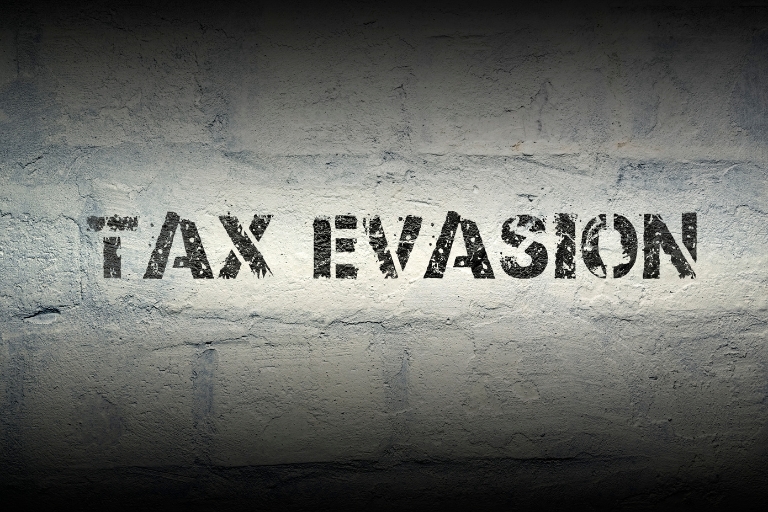Welcome, dear reader, to the wild and wacky world of tax preparation! If you’ve ever wondered how to navigate the labyrinthine tax code without resorting to the dark arts of tax evasion, you’ve come to the right place. We’re going to dive deep into the murky waters of tax law, so buckle up and hold onto your calculators!
Before we begin, let’s clarify one thing: tax evasion is illegal. It’s like trying to sneak into a movie theater without a ticket, but with the added excitement of potential jail time and hefty fines. So, while we’re going to have a laugh as we explore the complexities of tax preparation, remember that tax evasion is no laughing matter. Now, let’s get started!
The Basics of Tax Preparation
Let’s start with the basics. Tax preparation is like assembling a jigsaw puzzle, but instead of a pretty picture at the end, you get a sense of existential dread and a possible audit. It involves gathering all your financial information, understanding the tax laws, and filling out those delightful tax forms. It’s a process that can be as simple as filling out a postcard, or as complex as writing a novel… in Latin… backwards.
Now, you might be thinking, “Why can’t I just ignore all this and live off the grid in a cabin in the woods?” Well, aside from the lack of Wi-Fi and the potential for bear attacks, the government tends to frown on that sort of thing. So, unless you’re a fan of orange jumpsuits and communal showers, it’s best to get a handle on tax preparation.
Income: The Root of All Evil (and Taxes)
Income is the lifeblood of the tax system. It’s like the golden goose, except instead of laying golden eggs, it lays tax obligations. Income can come from many sources: your job, your investments, that Etsy store where you sell hand-knit socks for squirrels, etc. All of it is potentially taxable, and all of it needs to be reported on your tax return.
But not all income is created equal. There are different types of income, each with its own tax rate. For example, ordinary income (like your salary) is taxed at a different rate than capital gains (like the profit from selling your Beanie Baby collection). Understanding the different types of income is key to navigating the tax code.
Deductions: The Taxpayer’s Best Friend
Deductions are like the coupons of the tax world. They reduce the amount of income that’s subject to tax, which can lower your tax bill. There are many types of deductions, from the standard deduction (a flat amount that everyone can claim) to itemized deductions (specific expenses that you can deduct, like mortgage interest or medical expenses).
But beware! Deductions are a double-edged sword. While they can lower your tax bill, they can also increase your chances of an audit if you’re not careful. So, before you try to deduct that “business trip” to the Bahamas, make sure you understand the rules.
The Process of Tax Preparation
Now that we’ve covered the basics, let’s dive into the process of tax preparation. This is where the rubber meets the road, or in this case, where the pen meets the 1040 form. The process can be broken down into three steps: gather, calculate, and file.
Gathering involves collecting all your financial information. This includes W-2s, 1099s, receipts, and any other documents that show your income and expenses. It’s like a scavenger hunt, but instead of finding a hidden treasure, you’re finding hidden tax obligations.
Calculating: The Fun Part (Just Kidding)
Once you’ve gathered all your information, it’s time to calculate your tax liability. This involves figuring out your taxable income (your income minus your deductions) and then applying the tax rates. It’s like solving a complex math problem, but with the added pressure of potential financial ruin.
Calculating your taxes can be complicated, especially if you have multiple sources of income or a lot of deductions. But don’t worry, there are plenty of resources available to help, from tax preparation software to professional tax preparers. Just remember, it’s better to get it right than to get it fast.
Filing: The Moment of Truth
Once you’ve calculated your taxes, it’s time to file your return. This involves submitting your tax forms to the IRS, either by mail or electronically. It’s like sending a love letter, but instead of waiting for a response, you’re waiting for a refund (or a bill).
Filing your taxes can be stressful, especially if you owe money. But remember, it’s better to file and pay what you can than to ignore your tax obligations. The IRS is like a persistent suitor – it won’t go away just because you ignore it.
Common Mistakes in Tax Preparation
Now that we’ve covered the process, let’s talk about common mistakes. Tax preparation is a complex task, and it’s easy to make errors. But don’t worry, we’re here to help you avoid the most common pitfalls.
One common mistake is not reporting all your income. This can be tempting, especially if you have a side gig or freelance work. But remember, the IRS has a copy of all your W-2s and 1099s, so they’ll know if you’re holding out on them. It’s like trying to cheat in a game of poker when the dealer can see your cards.
Overestimating Deductions
Another common mistake is overestimating deductions. This can be tempting, especially if you’re self-employed or have a lot of expenses. But remember, the IRS has strict rules about what can and can’t be deducted. So, before you try to deduct your entire Netflix subscription as a “business expense,” make sure you understand the rules.
Overestimating deductions can lead to an audit, which is like a surprise party thrown by the IRS. And trust us, it’s not the kind of party you want to be invited to.
Not Filing on Time
The final common mistake is not filing on time. The deadline for filing your taxes is usually April 15th, unless you file for an extension. But remember, an extension to file is not an extension to pay. So, even if you get an extra six months to file your return, you still need to pay your estimated tax liability by April 15th.
Not filing on time can result in penalties and interest, which can add up quickly. It’s like forgetting your anniversary, but instead of getting the silent treatment, you get a bill from the IRS.
Conclusion
Well, there you have it, folks! A comprehensive, hilarious, and slightly terrifying guide to tax preparation. We hope you’ve learned something, had a few laughs, and gained a new appreciation for the complexity of the tax code.

Remember, tax evasion is illegal, but tax preparation doesn’t have to be scary. With a little knowledge and a lot of patience, you can navigate the tax code like a pro. And remember, when in doubt, it’s always best to consult a professional. Happy tax season!


